Do I have wait for Mother's Day?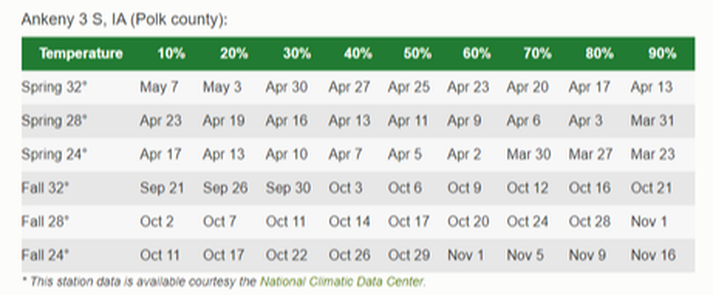 “When should I plant my tomatoes?” A common answer in central Iowa is “any time after Mother’s Day”. Depending on the year, Mother’s Day in the U.S. can be as early as May 8th or as late as May 14th. While that date lines up well with when our chance of another 32 F frost nears zero (see the risk of frost chart below for Ankeny, Iowa), does that rule of thumb apply everywhere every year? The best planting time for tomatoes depends on your weather conditions, but here are a few guidelines that can help you decide when to plant regardless of where you live. The first thing to understand about planting tomatoes (and peppers, eggplants, melons, and squash) is that they are warm weather plants. Tomatoes will not grow in temperatures below 50 F. The first sign that it is warm enough to plant is the night time temperature stays consistently above 50 F. The ten-day weather forecast for my town in central Iowa indicates only 2 of 10 days in the forecast will reach that minimum requirement which means I will wait another week or more to consider planting warm season crops. Why should I care about the soil temperature?The second thing to consider is the temperature of the soil about 4" deep. Ideally, tomatoes should be planted when the soil temperature is at least 60 F in the early morning. You can use a soil thermometer, a kitchen thermometer, or just stick your finger in the soil for a minute and see if it feels cold (if it feels uncomfortably cold it is probably below 60 F). So far this year, the reported soil temperatures have only reached about 50 F. Raised beds or a garden with a good southern exposure could be warmer than the reported temperatures. Why should I care about the weather forecast?The third thing to consider is the weather forecast. Even if there have been a few warm days and nights and the soil temperature warms to 60 F, a forecast for significant cold weather indicates it may be better to wait to plant until warmer temperatures are in the forecast. This next week looks windy, wet, and cool. I'll be planting lettuce, potatoes, onions, carrots, beets, radishes and other cool season crops, but leaving the tomatoes and peppers in the greenhouses. They wouldn't like the cooler nights. What about this year?So where does my garden in central Iowa stand on these 3 considerations? Our night time low temperatures this past week have been in the 40's or warmer most nights with one frost a couple nights ago. The soil temperature in my west-facing raised garden beds this morning has warmed, but the night time lows in the 10-day forecast has a mix of 40's and 50's. All of that suggests I should wait another week or so, which puts us pretty close to….Mother’s Day. What about Peppers, Eggplants, Squash and Melons?If you are like us, tomatoes are not the only type of plant you like to grow. We also grow peppers, eggplant, squash, and melons. Add 10 degrees to all of the tomato temperatures above when deciding when to plant peppers, eggplant, squash, and melons. Cool season plants like peas, potatoes, onions, celery, kale, carrots, broccoli, and cabbage can be planted now if not already done.
If you haven’t purchased flower seeds, tomato, pepper, eggplant, greens, potatoes, onions, strawberries, herbs, or squash plants yet, check out our plant sale page at https://www.iowabackyardfarmer.org/springplantsale.html I visited with some friends and fellow gardeners recently and discovered we all love to try new tomato varieties, but we pick them for very different reasons. Some pick based on the story behind the variety. Some look up reviews and get recommendations from other gardeners. Some choose a variety based on its flavor, looks, or the pattern of its leaves. Some pick a variety based on what they plan to use it for - canning, slicing, snacking, roasting or stuffing. We grow about 50 varieties every year, and it is just a drop in the bucket compared to the number of varieties available. So how do I choose from so many? Heirloom Vs. Hybrid TomatoesWe grow several heirlooms and I love all of their flavor and personality. But what does it mean when someone says heirloom? In a general sense an heirloom is something of value that is passed down from generation to generation. Many heirloom varieties have great stories attached to them for this reason. An heirloom plant is open-pollinated and grows true to type which means that if you save seeds from an heirloom plant you can plant those seeds and get the same type of plant again. If it grows true to type for several generations then it is an heirloom variety. If you want to save seeds, make sure that you pick an heirloom tomato to plant. So, why doesn't everyone grow heirloom tomatoes? Everyone used to until breeders developed hybrid tomatoes. Hybrids have advantages that heirlooms don't. Hybrids are more uniform from plant to plant, generally have better yields, are less prone to cracking and splitting, and have better disease resistance. Commercial growers use hybrids so they can time their tomato harvests which allows them to efficiently harvest their tomatoes. We notice that most hybrids yield earlier than comparable heirlooms which means you can have a larger harvest. Some hybrids store longer and have a more consistent tomato size which makes them more marketable and easier to manage when processing. All of those things sound great too, so why don't we all grow hybrids? Some people think hybrid means GMO, but it doesn't. You can buy organic hybrid seed just like you can buy organic heirloom seeds. Tomatoes are self pollinated and don't readily cross-pollinate with other varieties. Hybrids just means that someone selected one variety to be the female parent and another variety to be the male (pollen) parent of the seed you are growing. You could do that yourself if you wanted and make a whole new variety and name it yourself. The crossing between two different varieties, sometimes makes a super kid and those plants are worth planting. We grow lots of hybrids. I love the consistent performance and disease resistance. The issue with hybrids is that if you save seeds from those tomatoes and plant them next spring, you won't get the same plant. If you want to get the same plant, you have to buy seeds again. Some newer hybrids are great as breeders are making plants that combine some of the classic heirloom flavors with the increased disease resistance and consistent performance of a hybrid. One example I grow is called Brandy Boy. It is a cross between Brandywine (super flavor but little disease resistance) and Better Boy (better yield and disease resistance). Brandy Boy has the best qualities of both parents - very flavorful with an earlier and higher yield. My advice? Heirlooms are great if you will spend a little more time to make sure you take excellent care of them. They have great flavor and fun personalities. They come with great stories and history, and some of them are very tasty. They can be more difficult to grow and they aren't always consistent in their yield. If you have diseases, or you want a bumper crop of tomatoes that are uniform for preserving or can't spend much time maintaining a garden, pick a hybrid. There are lots of great choices out there! Indeterminate Vs. Determinate Tomatoes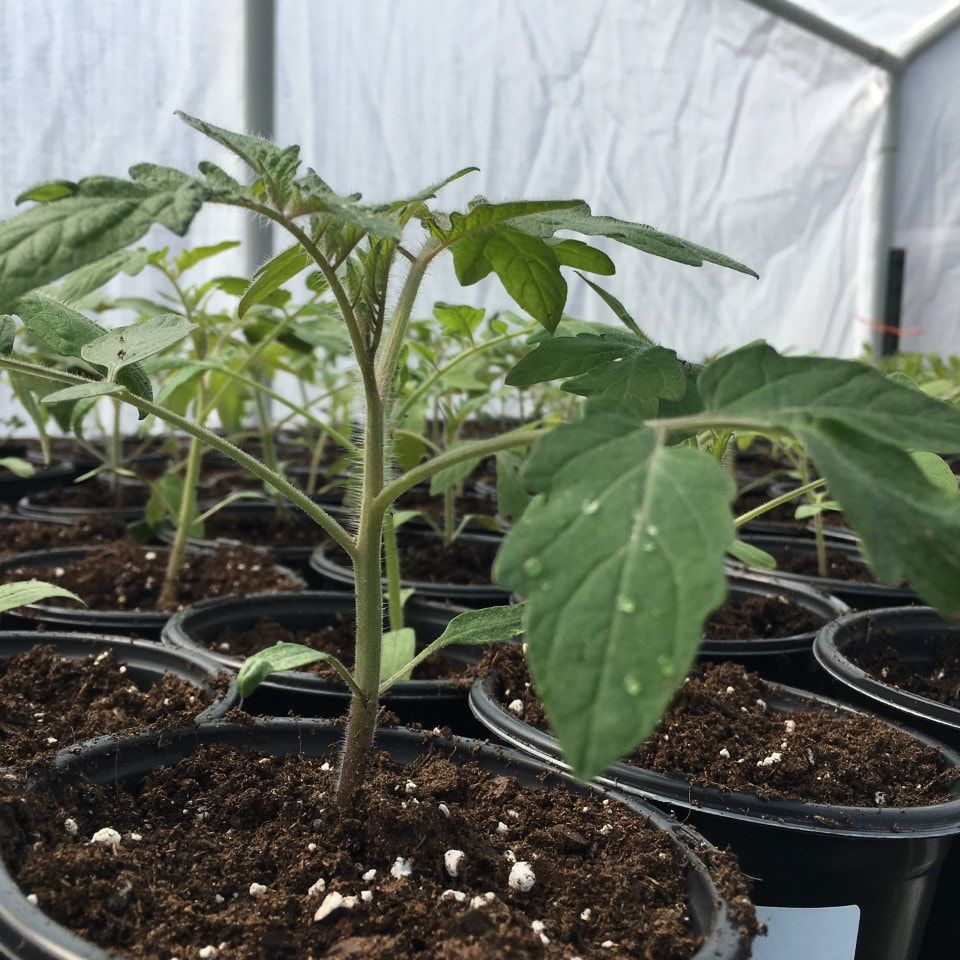 Tomato seedling in the greenhouse. Tomato seedling in the greenhouse. Can I tell you a story? I didn't used to pay attention to the differences between determinate and indeterminate until I started vertical gardening with the T-frames we use now. Some years ago, I had started my seeds indoors and they were beautiful. Steven was watching YouTube videos on how to increase yields from our garden and found the Mittleider vertical gardening system. He thought we should try it so he built a T-frame and set it up in the garden. I planted all my beautiful seedlings, and then I read the details. Determinate tomatoes: 1. Are predisposed by their genetics to grow a certain height and set a certain amount of fruit. 2. Usually fruit earlier in the season and for a shorter amount of time. This can be perfect for canning, when you want a lot of tomatoes all at once. 3. Tend to grow bushy and are shorter that indeterminate tomatoes. 4. Work well if you don't want to stake tomatoes, or make big cages. However, determinate varieties are not ideal for growing pruned to a single stem up a trellis. For that we needed an indeterminate variety, so we ran to some stores to see what we could find. I replaced all my determinate tomatoes for a grab bag of indeterminate plants. Lots of these turned out to be heirlooms that I loved. Indeterminate tomatoes: 1. Are not limited to a certain height or yield by genetics. They keep growing as long as the conditions are favorable. Mine can grow 12 feet tall in our garden, and I have seen them 30 feet tall in hydroponic greenhouses. 2. Need a larger space and a trellis or tomato cage to keep them off the ground. 3. Would have a hard time in a patio pot since they grow so tall. Many tomato varieties are indeterminate which provide tomatoes until the plant is killed by disease or frost. We list which variety is which on our spring plant sale page, or a quick search online can help you figure out whether your favorite tomato is determinate or indeterminate. Does color or shape influence tomato flavor?This is the fun part, and there are so many options! Tomatoes are edible art. I have grown red, purple, green, black, pink, yellow, orange, and stripes. The color doesn't guarantee the flavor, but it is an indicator. I find that: 1. Red tomatoes have a classic tomato flavor, sweet and acidic. The redder the tomato, the more acidic it tends to be. 2. Pink tomatoes tend to be a little milder than red. 3. Yellow and orange tomatoes tend to be even sweeter and less acidic than pink and red tomatoes. 4. Purple/black tomatoes have a earthy smoky flavor. 5. Green tomatoes tend to be sweet with a little zing. As far as shape goes, ox heart tomatoes don't have many seeds but are still great to eat fresh and I love them for canning. An elongated shape is classic for paste tomatoes. They tend to be a little drier, which is great for sauce. Big round beefsteaks are going to be juicy. Cherry tomatoes have a higher skin to inside ratio, which is not ideal for saucing as they have more seeds and skin to flesh, but smaller varieties can be great for making sun-dried tomatoes or holding their shape in salads, pastas and snacks. What about performance reviews for tomatoes?When deciding whether or not to add a new tomato variety to our garden we do a quick Google search to check out the reviews. Remember to factor in the effects your location and climate. I picked a tomato last year that had great reviews, but it originated from a hot, dry desert climate and most of the reviews were from the arid west. It did not do well in the humidity and rain of the Midwest. Tomatoes that perform well for me here in Iowa, do not do as well in the higher, colder, shorter season in Colorado. If you are looking for credentials, an AAS (All-America Selection winner) tag means that the tomato has been tested and judged to perform well across the United States. You might recognize Celebrity or Big Beef in this category. Seed catalogs often post reviews too. One review might not mean anything, but if you start seeing a trend, like this tomato cracks easily, then you will want to take note. What if this tomato has a great back story or history?This is where I have the most fun, and the most trouble. I love a tomato with a good back story, but I have to remember that a good story does not guarantee a great tomato. For example, I tried Nebraska Wedding tomato last year. I love a good orange tomato, and it had a good story about Nebraska brides being given this tomato as they set up home. It was a great story, and Nebraska is not far from here, so I tried it. It did not live up to the hype. I had 4 other yellow/orange tomatoes that did better. So, this year, it is off the list. Good story or not, it has to grow well and taste good to get planted in my garden the following year. Don't be afraid to try something new, and don't hesitate to replace it if its not working. While it may be really cool to plant a variety with a story, breeders are coming up with new varieties all the time. If you know what they are trying to accomplish and what parent stock they are using, you can find some great new tomato varieties. I love that breeders are crossing those fabulously flavored heirlooms with high performance tomatoes and I look forward to trying more of these. This year we are trying Paisano (a determinate version of the classic indeterminate San Marzano), Mountain Rouge (has pink Brandywine in its lineage but with less cracking and is ready to harvest nearly 3 weeks earlier), and Chef's Choice Orange (an updated version of the classic Amana Orange that is ready to harvest 2 weeks earlier than the classic) in our line up of these new varieties. When picking a tomato to grow keep the end use in mindWhen people ask me what kind of tomato they should plant, the first question I ask is "what are you planning to use it for?" If you can hundreds of quarts of tomatoes and sauce like I do each year, then you will want tomatoes that promises a large yield and uniform fruit. I love the heirloom lumpy rippled look, but it is a real pain when I am trying to peel hundreds of them. I also love a great big juicy beefsteak tomato, but if you are making spaghetti sauce, all that watery juice and seeds in your sauce might not be what you want. A good paste or ox-heart tomato will be much thicker and less seedy. If you love a fresh sliced tomato, a paste tomato will be too dry, and if you are wanting to roast tomatoes for soup, remember that those black and purple tomatoes that are amazing freshly sliced, will make your sauce look an unappetizing brown when they are blended together. Keep the end use in mind when planning what to plant and you will be much happier. Garden space & light requirements for tomatoesLast on the list, but one of the first things to consider is what kind of space you will be growing in. We covered indeterminate and determinate above. Remember that you will need a trellis or large tomato cage for an indeterminate tomato, but they can be pruned to grow up and not out. Determinate tomatoes should not be pruned the same way, and they will be bushy. Don't forget to consider sunlight requirements. If you have a shady backyard with only 3-4 hours of direct sunlight plant a smaller fruiting tomato like a cherry or grape tomato. If you want to plant cocktail tomatoes, make sure you have at least 4-5 hours of sunlight. Slicer tomatoes require 6-7 hours, and beaksteaks require at least 7 hours of sunlight to get maximum production. Don't worry if your garden spot only receives a few hours of direct sunlight as there are many varieties of various shapes and colors that will produce very well with just a few hours of direct sunlight. If your garden gets 7 or more hours of direct sunlight then you've won the "tomato jackpot" as you can grow any size of tomatoes you want and they should produce well. My last advice is if you have the space try a few different varieties. You will sort out pretty quickly which ones work well for you and if you get a bumper crop you can always share it with your neighbors. The nice thing about gardens is that there is always next season to try again!
|
Archives
April 2022
Categories
All
|
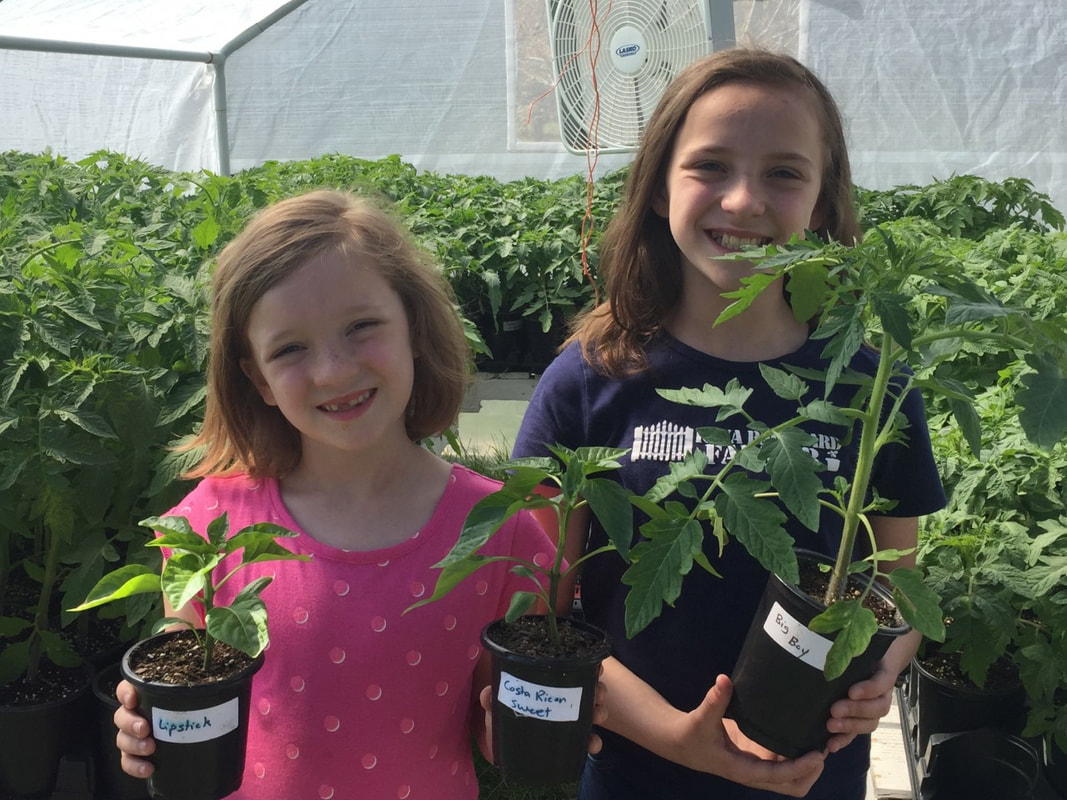
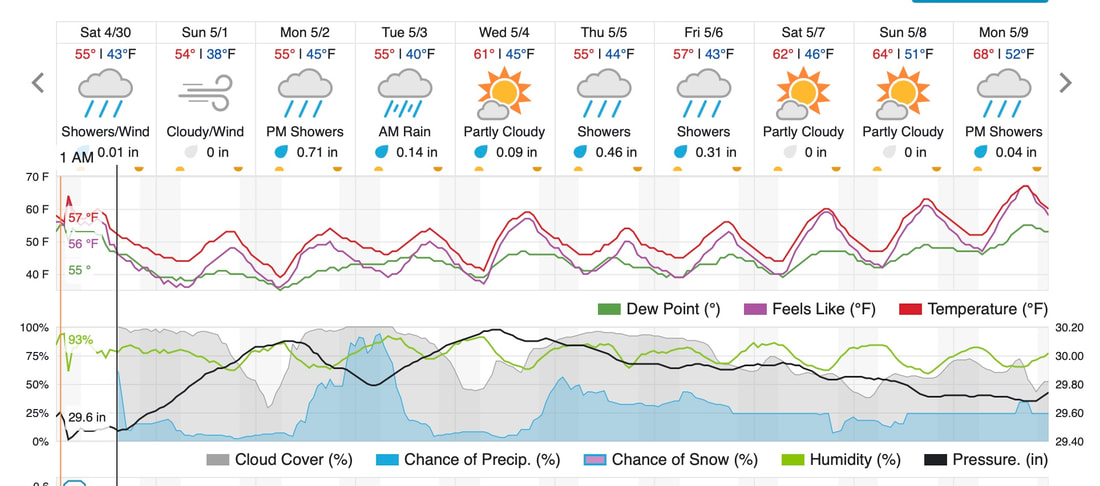

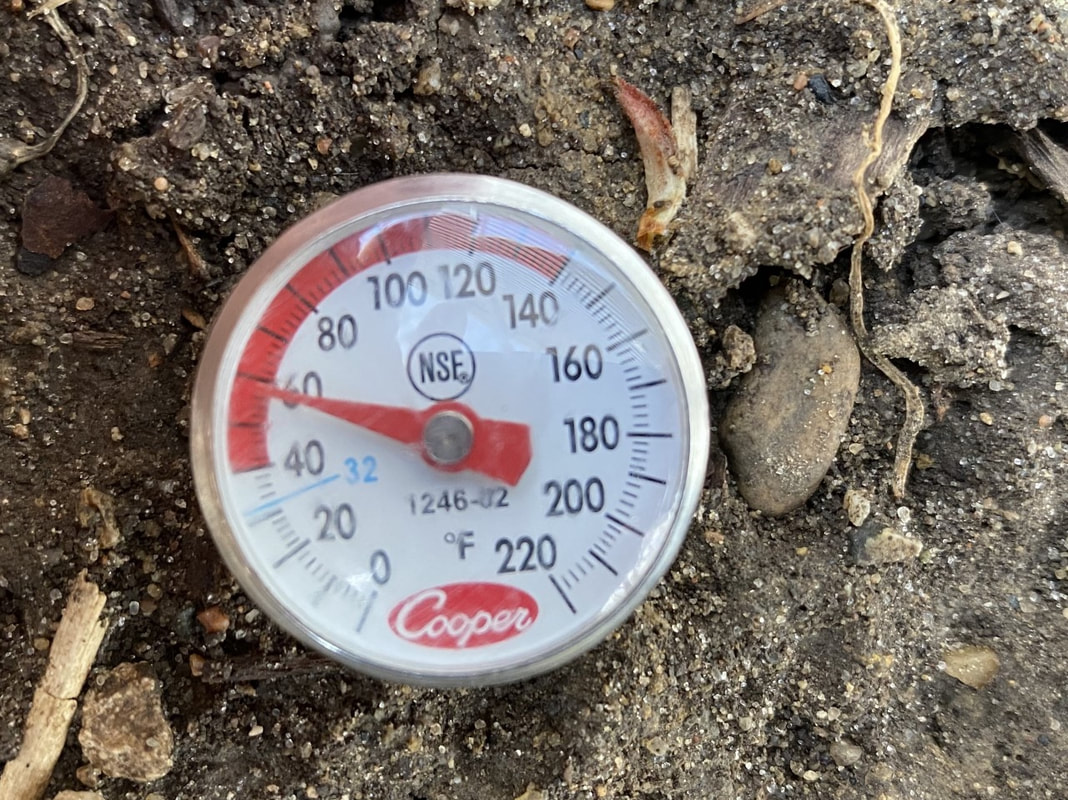
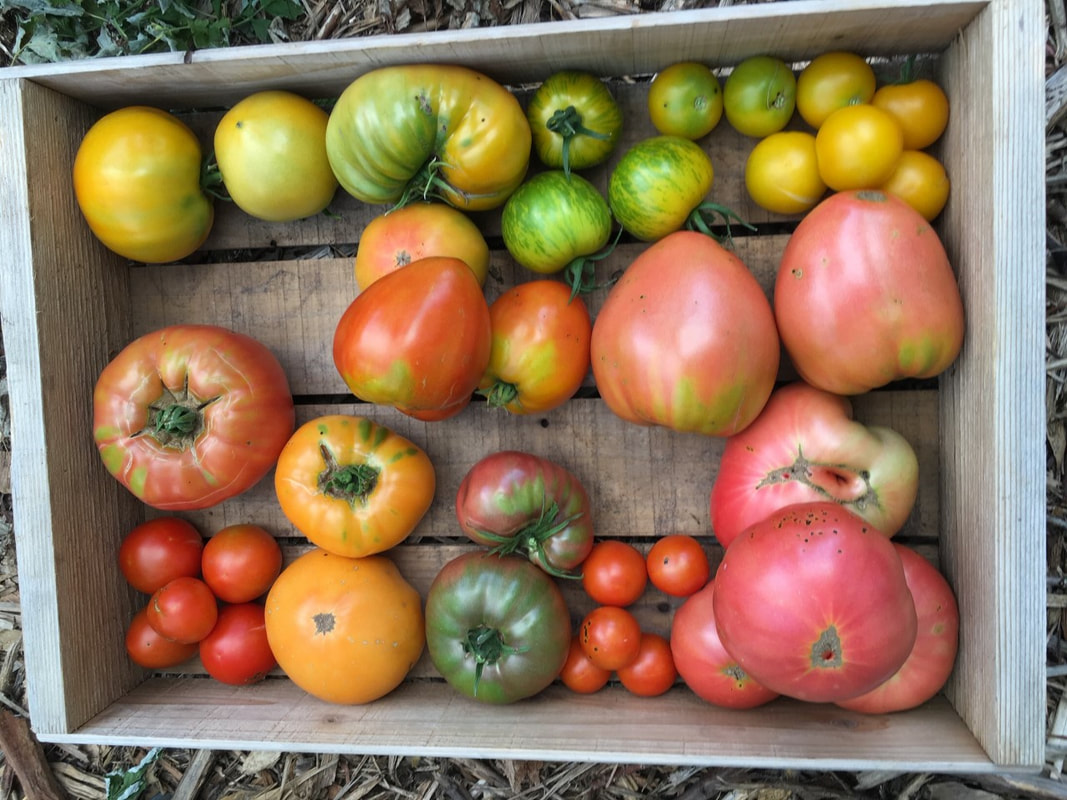
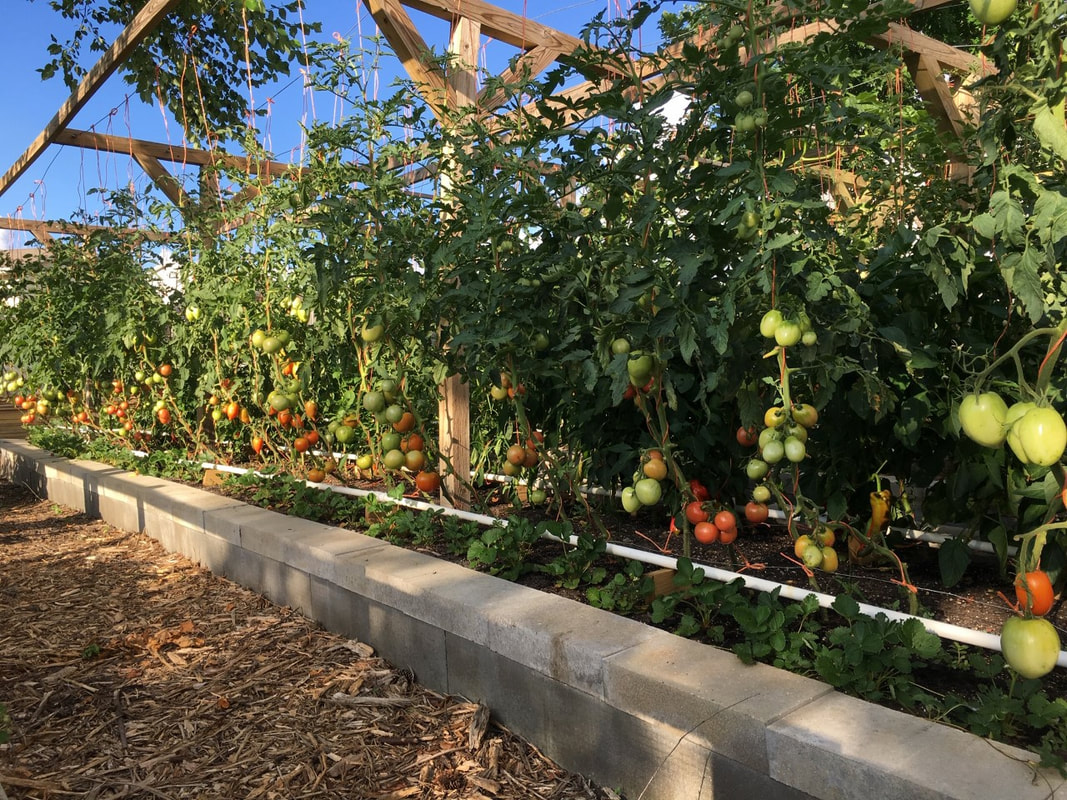
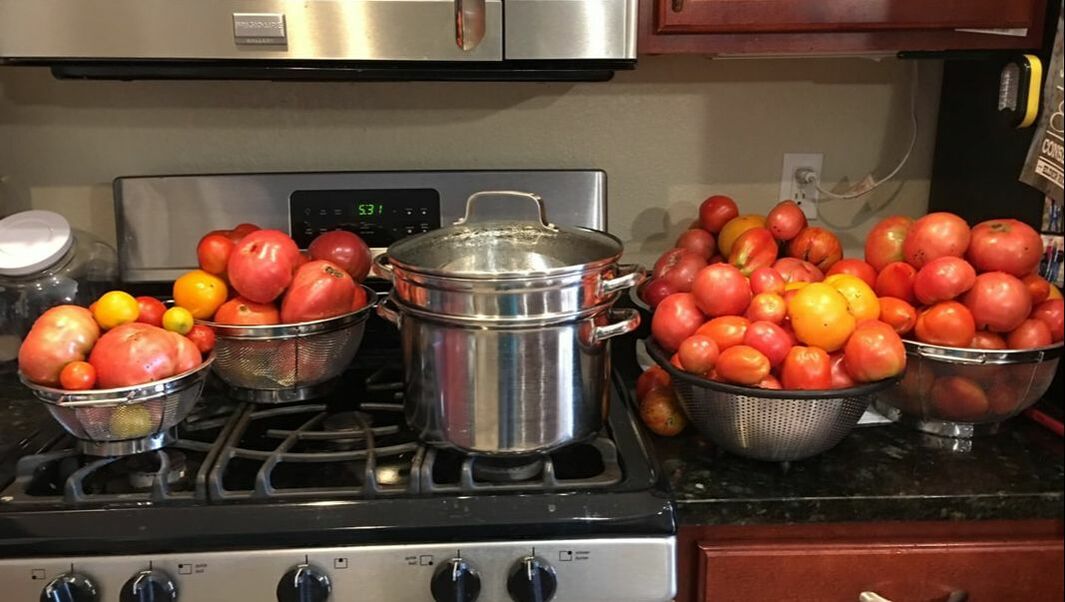
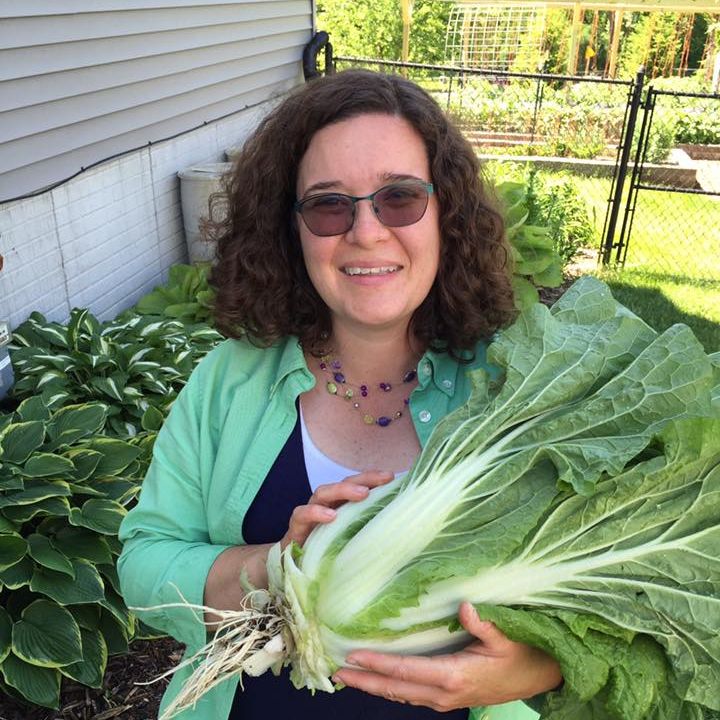
 RSS Feed
RSS Feed